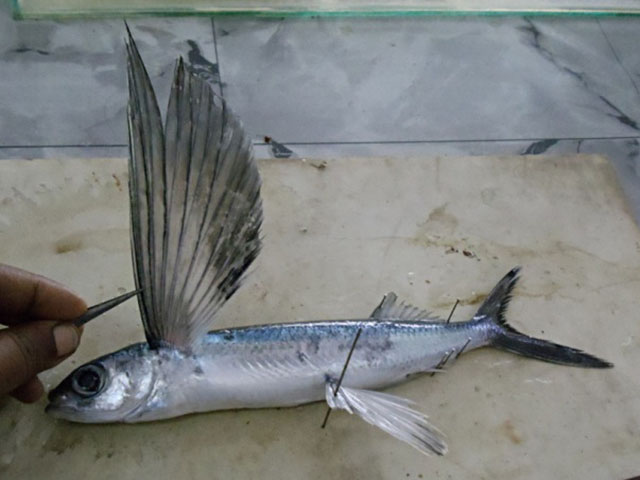| Exocoetidae (Flyingfishes) |
| 35 cm TL (male/unsexed) |
|
pelagic-oceanic; marine; depth range 0 - 20 m, oceanodromous |
| Widespread in tropical zones of all oceans. Western Atlantic: Massachusetts, USA to southern South America (Ref. 7251). Eastern Atlantic: equator eastward to 8°W, Cape Verde. Northwest Atlantic: Canada (Ref. 5951). Indian Ocean: widely distributed but absent from the Red Sea, northern Arabian Sea, and the Persian Gulf (Ref. 3395). Western Pacific: absent in inland waters of southeast Asia (Ref. 9839). Eastern Central Pacific. The distinction between Cheilopogon antoncichi and Cheilopogon unicolor awaits clarification. |
|
Dorsal spines (total): 0-0; Dorsal soft rays (total): 12-14; Anal spines: 0-0; Anal soft rays: 9-11. Body dark iridescent blue above, silvery white below; pectorals dark grey, with a broad pale margin crossed by a pale stripe becoming narrower toward anterior fin margin; pelvic fins pale (Ref. 2797). Juveniles up to 10-19 cm SL with dark bars on body and variegated paired fins (Ref. 2797). |
| Occurs in surface waters of the open ocean (Ref. 30573). Capable of leaping out of the water and gliding for considerable distances above the surface (Ref. 30573). Feeds on zooplankton and small fish (Ref. 9839). |
|
Least Concern (LC); Date assessed: 29 January 2013 Ref. (130435)
|
| harmless |
Source and more info: www.fishbase.org. For personal, classroom, and other internal use only. Not for publication.
